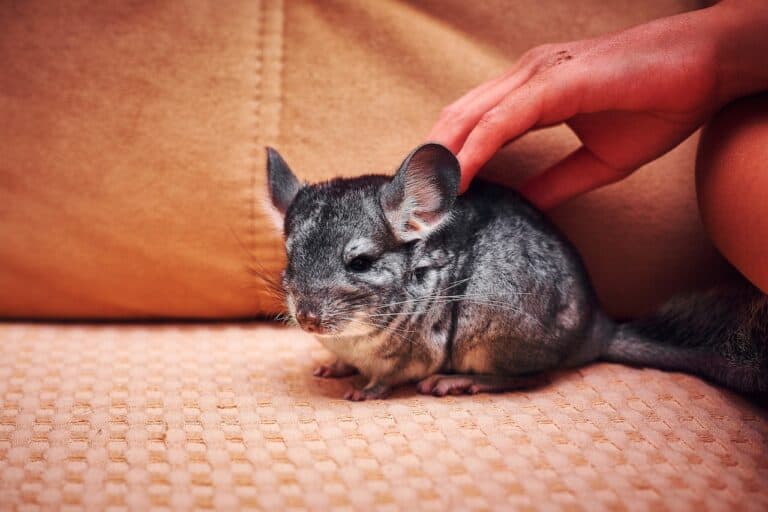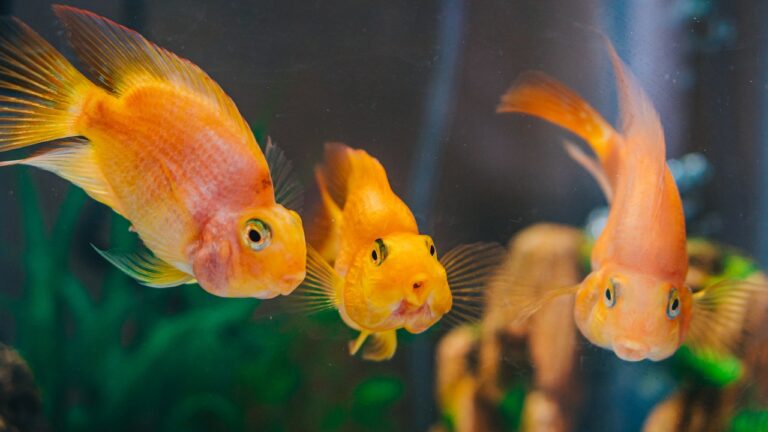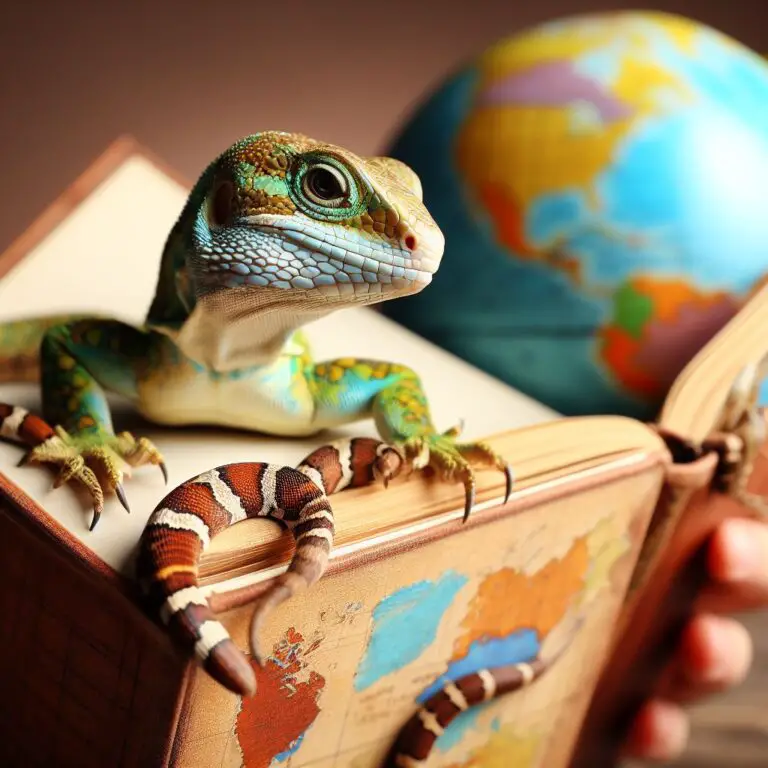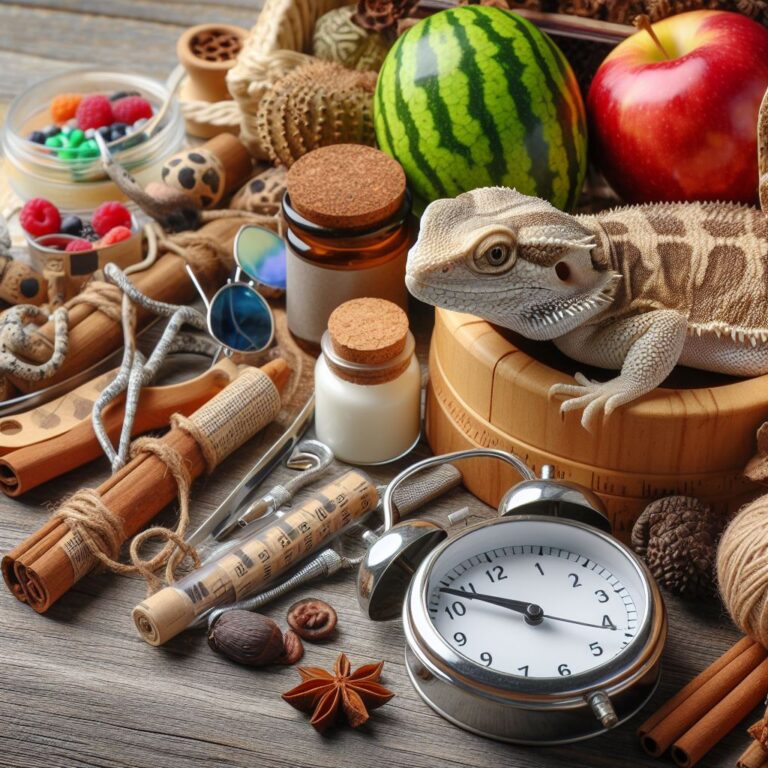Proper Care for Popular Exotic Reptile Pets
Reptiles like bearded dragons, ball pythons, leopard geckos, corn snakes, and tortoises are quickly becoming popular exotic pets in many households.
While caring for these fascinating creatures can be very rewarding, it also requires dedication to providing proper housing, nutrition, healthcare, and enrichment to keep them healthy and happy.
This comprehensive guide covers key care recommendations for the most common reptile pets.
Key takeaways:
| Key Takeaway | Details |
|---|---|
| Provide proper enclosure | Appropriate size, furnishings, substrates, heating, lighting, humidity control |
| Offer balanced nutrition | Live insects, vegetables, fruits, supplements |
| Maintain good hygiene | Disinfect enclosure, wash hands, dedicated tools |
| Give proper healthcare | Annual vet exams, quarantine new pets, monitor health |
| Stimulate natural behaviors | Climbing, burrowing, basking, foraging |
| Commit long-term | Reptiles live 10-30+ years |
| Specialized needs | Unlike cats/dogs, exotic pets need precise care |
| Prevent health issues | Metabolic bone disease, parasites, infections, etc. |
| Proper temperatures | Thermal gradient with basking area |
| Humidity control | Varies by species, ideal range 30-60% |
| UVB lighting | Needed for most reptile species |
| Enrichment | Structured habitat, variety, exercise, mental stimulation |
The key points focus on setting up a proper habitat, feeding a balanced diet with supplements, maintaining good hygiene and preventative healthcare, providing enrichment, and meeting the specialized needs of reptiles like temperature gradients and UVB lighting.
Following proper care guidelines helps prevent common health issues and allows reptiles to exhibit natural behaviors. Reptiles have long lifespans and specialized needs unlike cats and dogs, so exotic pet owners must commit to their proper care.
Habitat Setup
Providing an appropriate habitat is one of the most important aspects of reptile care. Their enclosures should recreate key elements of their natural environment as closely as possible.
1. Enclosure Size
Reptiles need adequate space to move around and exhibit natural behaviors. Minimum recommended enclosure sizes:
- Bearded dragons:
- Juveniles – 10-20 gallon tank
- Adults – 40-75+ gallon tank
- Ball pythons:
- Minimum – 20 gallon long tank
- Adults – 40+ gallon tank
- Leopard geckos:
- Juveniles – 10 gallon
- Adults – 20 gallon
- Corn snakes:
- Minimum – 20 gallon long
- Adults – 40+ gallon
- Tortoises:
- 50+ gallon enclosure or larger
2. Enclosure Setup
- A screen top is essential for ventilation.
- Substrates like reptile carpets or tiles work well for bearded dragons, leopard geckos, and corn snakes.
- 2-3 inches of substrate like cypress mulch can be used for ball pythons.
- Tortoises need substrates like cypress mulch or orchid bark.
- Provide ample hiding spots like caves, logs, and plants.
- Include climbing branches, ramps, and hammocks for arboreal species.
- Use under tank heaters or overhead ceramic heat emitters to create a thermal gradient from 78-88°F on the cool end to 88-100°F on the warm end. Use thermometers to monitor temperatures.
- Provide UVB lighting for 12-14 hours daily.
- Maintain humidity levels specific to each species using misters or moisture-retaining substrates. Ideal humidity levels range from 30-60% for most species.
- Thoroughly disinfect and clean the enclosure at least once a week.
Diet and Nutrition
Feeding an appropriate diet is crucial for good health.
Key diet components include:
- Bearded dragons – Juveniles eat mostly insects like crickets, worms, and small amounts of veggies. Adults eat about 75% veggies like collard greens, squash, bell peppers and 25% insects.
- Ball pythons – Whole prey like adult mice, rats, or chicks. Hatchlings eat mouse hoppers, juveniles eat mouse fuzzies.
- Leopard geckos – Crickets, mealworms, waxworms, occasional treats like hornworms. Dust insects with calcium + D3 and multivitamin supplements.
- Corn snakes – Appropriately sized mice. Hatchlings eat pinky mice, adults eat adult mice.
- Tortoises – High fiber diet of grasses, leafy greens, hay. Limit fruits to <5% of diet.
- Provide clean, fresh water at all times.
- Feed juveniles every day, adult reptiles 2-3 times per week.
- Gut load feeder insects with nutritious foods. Dust with supplements.
- Do not handle reptiles for at least 24 hours after feeding to allow proper digestion.
Extra nutrition tips to keep your exotic reptile pets even healthier:
Supplements
It is essential to dust foods with:
- Calcium powder for healthy bones and eggshell development
- Vitamin D3 for calcium metabolism
- Multivitamins for nutritional balance
Follow supplement directions carefully. Over-supplementing can cause health issues.
Hydration
Ensure fresh, clean water is always available in the habitat. Also offer:
- Light misting with water daily
- Water-rich foods like fruits and vegetables
Proper hydration is vital for all bodily functions.
Regular Feeding
Set up a consistent feeding routine based on your reptile’s needs. Signs of underfeeding include:
- Weight loss
- Lethargy and weakness
- Increased aggression
Monitor appetites and watch for signs of poor nutrition. Adjust diets as needed.
Reptile Handling for Health
Frequent handling helps socialize reptiles and allows close observation of health and condition. Follow these tips:
- Handle gently, supporting the body properly
- Start young and handle often so the reptile becomes accustomed
- Avoid handling after feeding for proper digestion
- Wash hands before and after handling
- Disinfect any housing items before and after handling
Positive handling experiences help minimize stress.
Recognizing Common Health Issues
Being able to identify basic health issues allows early intervention and treatment. Watch for:
Respiratory Infections
Symptoms include:
- Mucus in mouth or nose
- Congestion
- Open-mouth breathing
- Excessive moisture in the enclosure
Can be caused by low temperatures, improper humidity, or unsanitary conditions. Veterinary treatment may be needed.
Gastrointestinal Issues
Signs include:
- Lack of appetite
- Loose, discolored, or smell stool
- Swollen abdomen
- Vomiting
Causes include parasites, infections, poor nutrition or ingesting substrate. Proper husbandry and vet care can resolve this.
Skin Irritation and Infections
Look for:
- Red, inflamed areas
- Abscesses
- Scaly or crusty skin
- Abnormal shedding
Can result from mites, or fungal or bacterial infections. Topical creams or oral medication may be prescribed.
Egg Binding
Symptoms in females:
- Swollen, hard abdomen
- Straining and difficulty defecating
- Loss of appetite
- Lethargy
Requires immediate vet assistance for egg removal to prevent serious illness.
Being alert to changes and getting prompt veterinary care maximizes the chance of successful treatment.
Preventive Care Measures
Proactive care is key for sustaining exotic reptile health. Implement:
- Quarantine for all new reptiles – isolate for at least 30-60 days before introducing. This helps prevent the spread of contagious diseases.
- Parasite testing and treatment – fecal tests detect internal parasites allowing effective medication. Parasites like pinworms, hookworms, and tapeworms can cause weight loss, abdominal swelling, appetite loss and other issues.
- Regular wellness exams – yearly vet check-ups detect issues early. Exams include a physical inspection of skin, eyes, mouth, body condition as well as diagnostic tests as needed.
- Vaccinations – certain species benefit from preventive vaccines. Common reptile vaccines include those for adenovirus, rabies, and some bacterial infections. Discuss options with your vet.
- Write down observations – track any changes in appetite, behavior or stool. Keeping detailed records helps identify health trends.
- Disinfecting practices – Use diluted bleach or reptile-safe disinfectants on all surfaces, bowls, and decor. Rinse thoroughly and let dry fully before returning items to enclosure. Proper disinfection prevents the spread of bacteria and fungi.
- Routine shed checks – Monitor frequently during shedding periods. Soak in shallow warm water to aid shedding if needed. Gently remove retained eye caps or skin pieces if present. Helps ensure full, clean sheds and prevents issues.
Prevention reduces illness risk and supports longevity.
Choosing an Experienced Exotics Veterinarian
Having an experienced herp vet (herpetology veterinarian) is essential for proper healthcare. When selecting a vet:
- Ask if they have specialized reptile training and experience. This includes schooling, certifications, attending reptile veterinary conferences, and years in practice treating exotic species.
- Look for AAHA accreditation which indicates advanced standards in amenities, staffing and procedures. AAHA hospitals must pass regular inspections.
- Schedule an initial consultation to evaluate the vet’s competency. Ask lots of questions to assess their knowledge and temperament. Bring your pet’s history and husbandry details.
- Tour the hospital to check for proper reptile housing and equipment like microscopes, testing labs, sterile surgery suites, specialized tools for small pets, and separate reptile and amphibian wards.
- Ensure they have access to advanced diagnostics like cultures & sensitivity testing, endoscopies, biopsies, ultrasounds, x-rays, and CT scans. These are needed to accurately diagnose exotic illnesses and injuries.
- Ask about emergency policies and after-hours care for critical situations. Look for 24/7 emergency services availability.
- Verify the vet is comfortable prescribing medications proven safe for reptiles as dosing differs from cats and dogs.
Finding a qualified exotic pet veterinarian is key to your reptile’s preventative care and can be lifesaving in emergencies. Take time to thoroughly vet your prospective reptile vet!
Enrichment
Providing proper enrichment is vital for reptiles’ health and wellbeing. Ideas for enrichment include:
- Structured habitat with climbing branches, rocks, live or artificial plants
- Hide boxes, tunnels, hammocks, and other accessories
- Varied substrates and textures for burrowing or digging
- Puzzle feeders, scattering food, to encourage natural foraging
- Allowing supervised exploration outside enclosure
Conclusion
In summary, exotic reptiles can make rewarding but challenging pets. They have very specific habitats, heating, lighting, humidity, and dietary needs to stay healthy. Reptiles are prone to issues like metabolic bone disease, parasites, respiratory infections, and more if care guidelines aren’t followed.
Providing the proper enclosure setup, temperatures, UVB lighting, a balanced diet with supplements, and veterinary care is essential to prevent health problems.
With their complex requirements, exotic reptiles are not ideal pets for beginners. But with dedicated care and attention to their specialized needs, reptiles can thrive and make fascinating animal companions.
Frequently Asked Questions
1. What are the most important elements of a healthy habitat for an exotic reptile?
The most critical components of a healthy reptile habitat are appropriate housing size, optimal temperatures and humidity levels, proper lighting and heat sources, safe substrates, places to hide, and cleanliness. These factors significantly impact a reptile’s health and wellbeing.
2. How often should I take my exotic reptile to the vet?
Plan to take exotic reptiles for wellness exams with an experienced reptile vet at least once yearly. Newly acquired reptiles should be seen right away for an initial health assessment. Immediately contact your exotic vet if you notice any signs of illness or injury.
3. What should I feed my exotic reptile?
Research and provide species-appropriate fresh foods, live insects, pre-killed prey items, and high-quality commercial diets specifically formulated for reptiles. Supplement foods as needed under veterinary guidance. Avoid over-supplementing.
4. How can I tell if my exotic reptile is sick?
Watch for signs of illness including wheezing/excessive mucus, lack of appetite, weight loss, loose stools, vomiting, skin abnormalities, eye/mouth discharge, abnormal shedding, and changes in behavior like lethargy or aggression. Promptly consult an exotic vet.
5. Why does my reptile need a veterinarian specializing in exotic pets?
Exotic reptiles have unique biology, nutrition, and care needs that general veterinarians may not have advanced training in. Seeing reptile vets with specialized exotic animal expertise optimizes preventative healthcare and urgent treatment when health issues emerge.
6. How big of an enclosure does my reptile need?
Enclosure sizes vary significantly by species. For example, adult bearded dragons need a minimum of a 40-75+ gallon tank while adult leopard geckos only require a 20 gallon tank. Always research the adult size of your reptile and provide an appropriately sized enclosure.
7. What temperature and lighting does my reptile need?
Most reptiles require a thermal gradient from 77-90°F. Use under tank heaters, ceramic heat emitters, and basking lights to create this gradient. UVB lighting for 12-14 hours a day is also essential for most species.
Peter Stones is the founder of Exotic Pets Place, the leading online resource for exotic pet care information.
With over 10 years of hands-on exotic pet ownership experience, he is deeply passionate about sharing his expertise to help others properly care for their unusual pets.
When he's not writing extensively researched articles or connecting with fellow exotic pet enthusiasts worldwide, you can find Peter at home tending to his own beloved menagerie of exotic animals.







